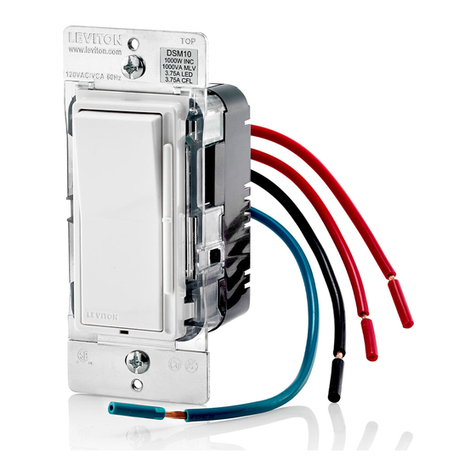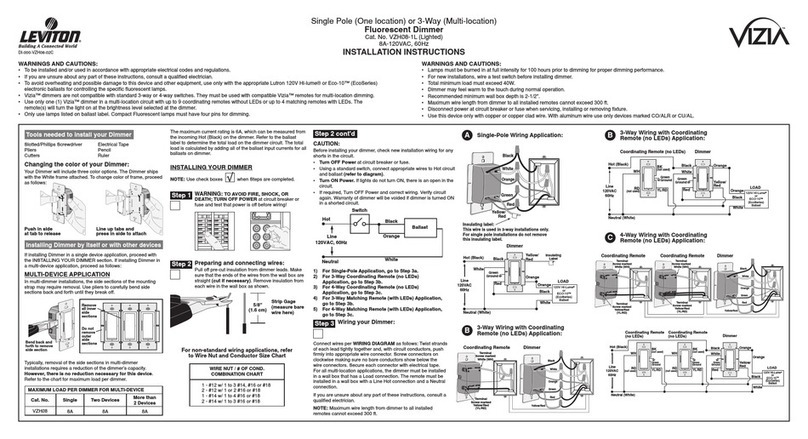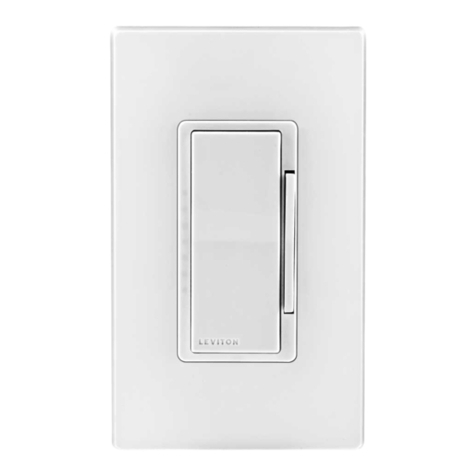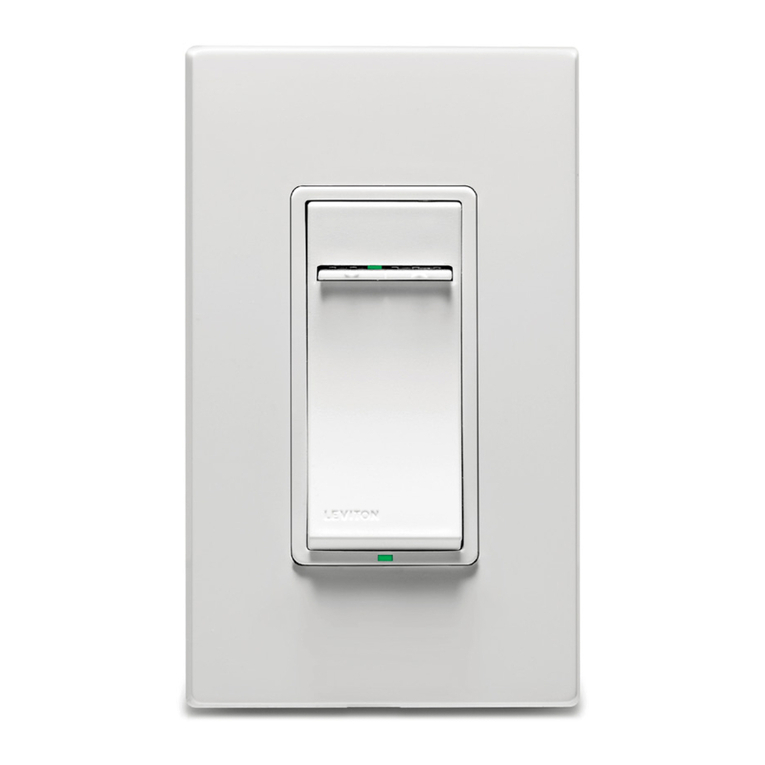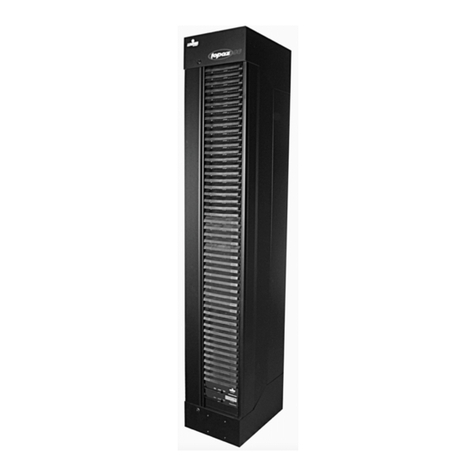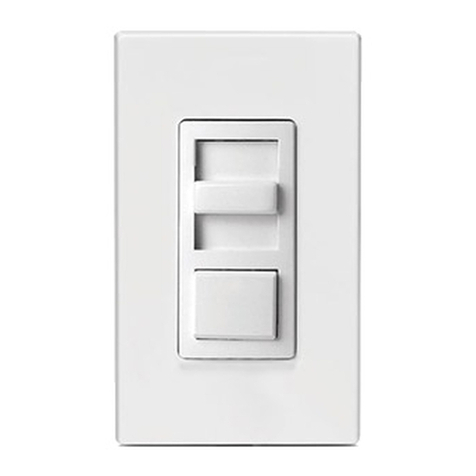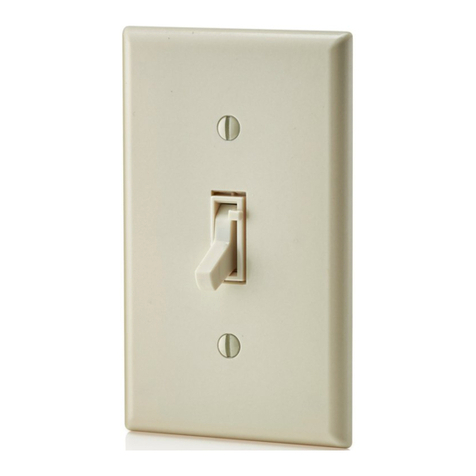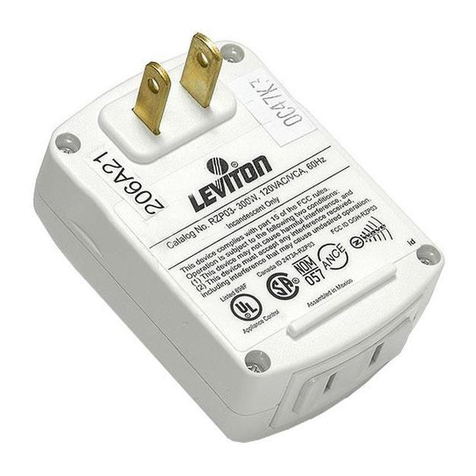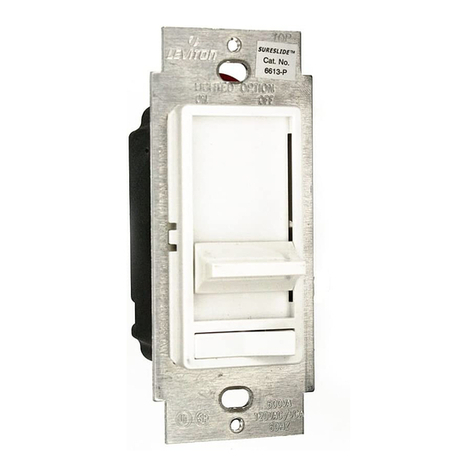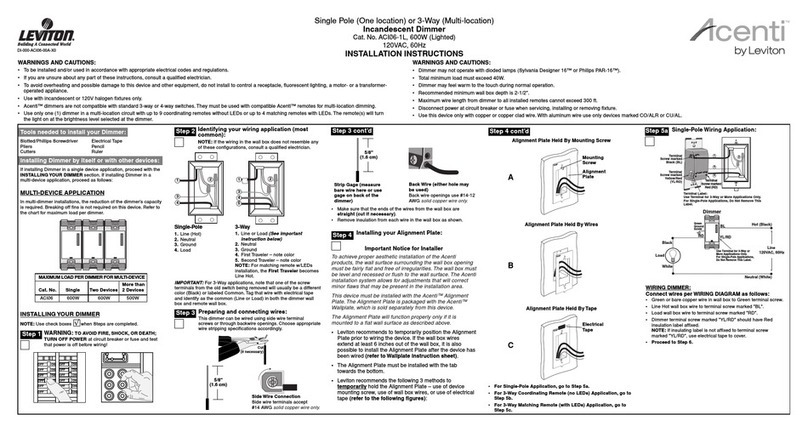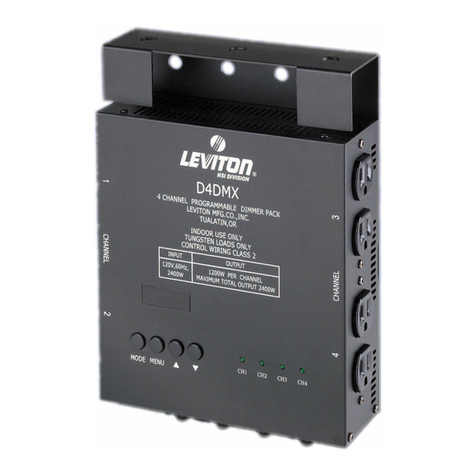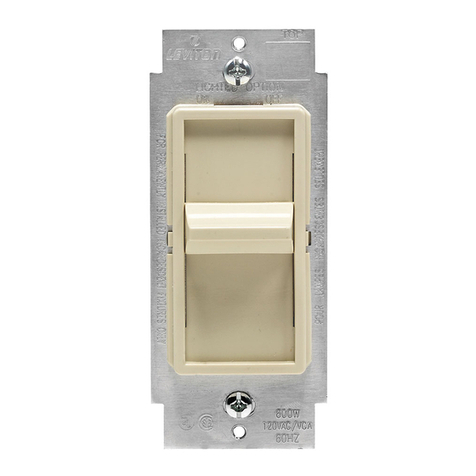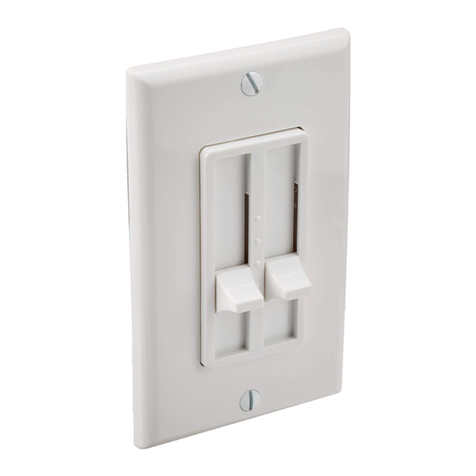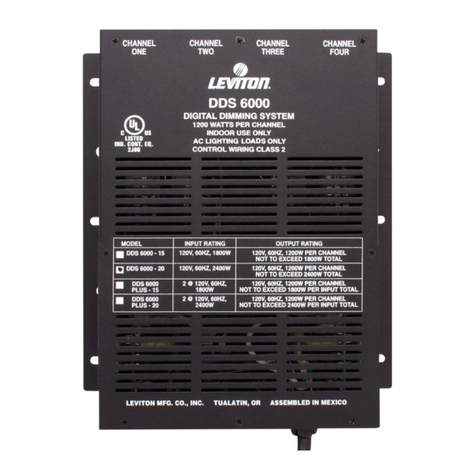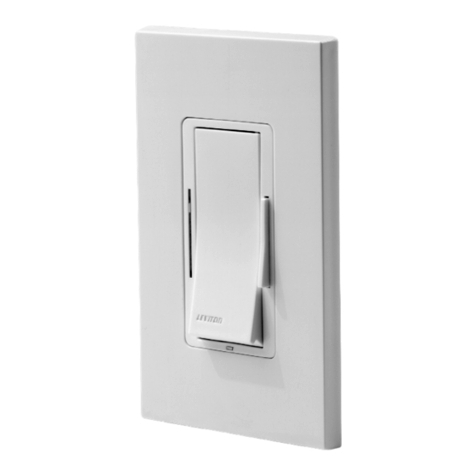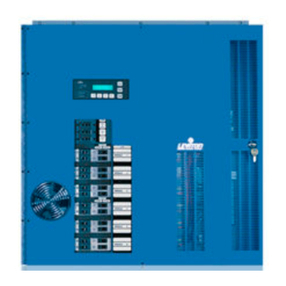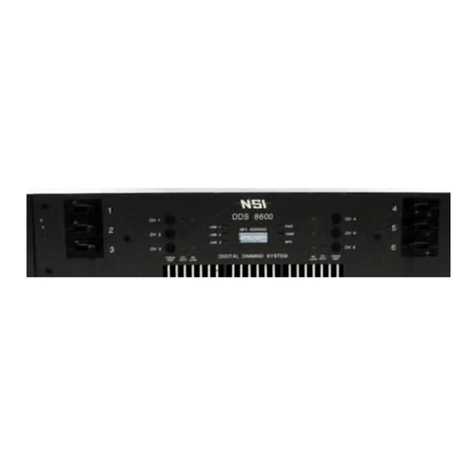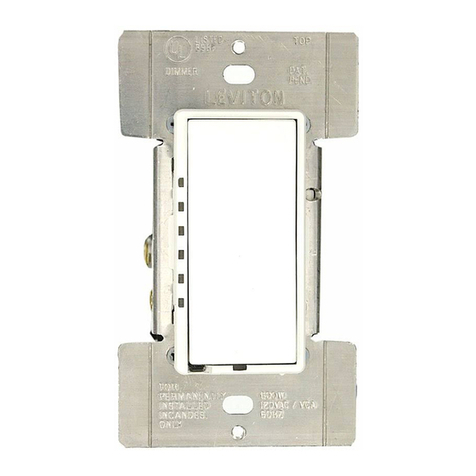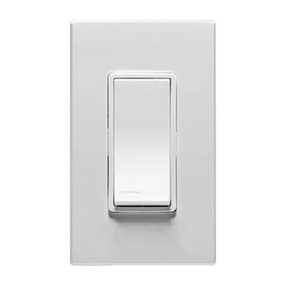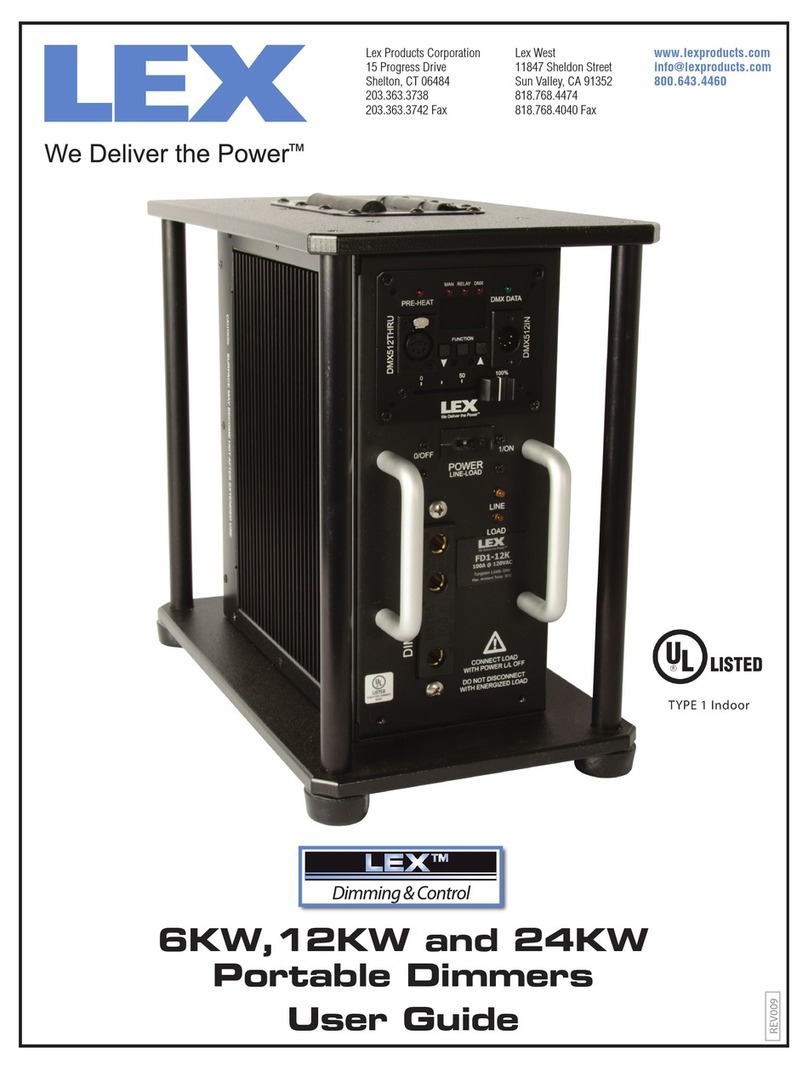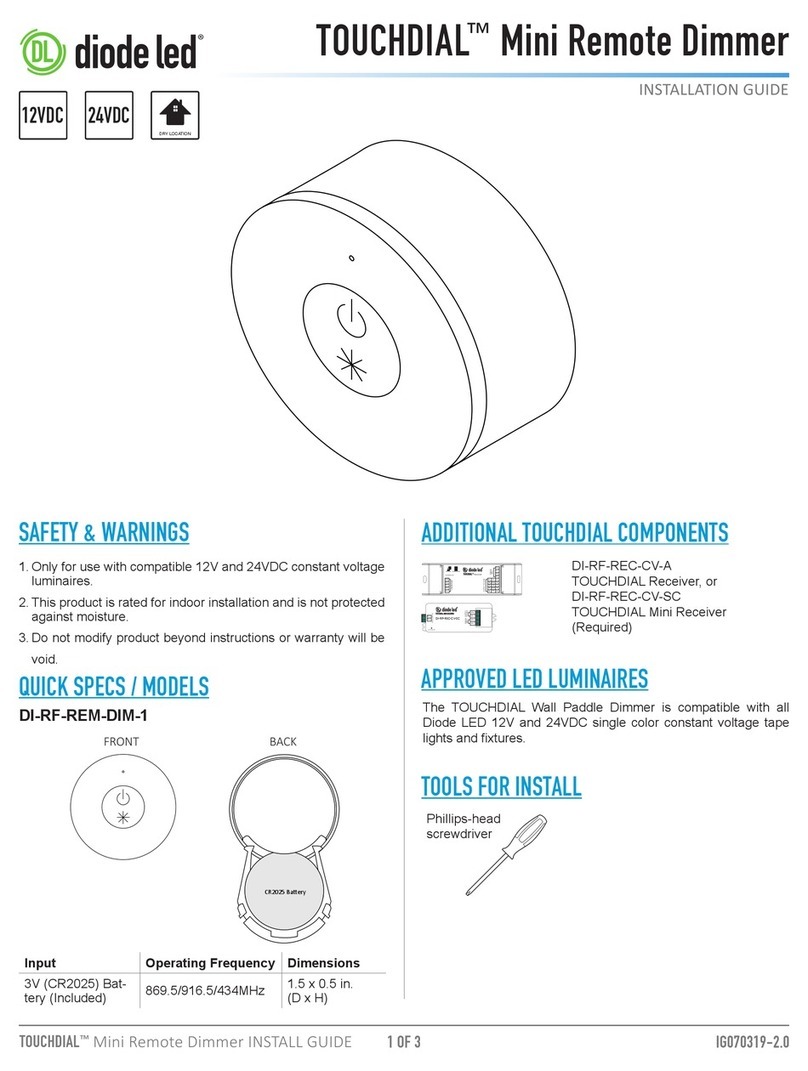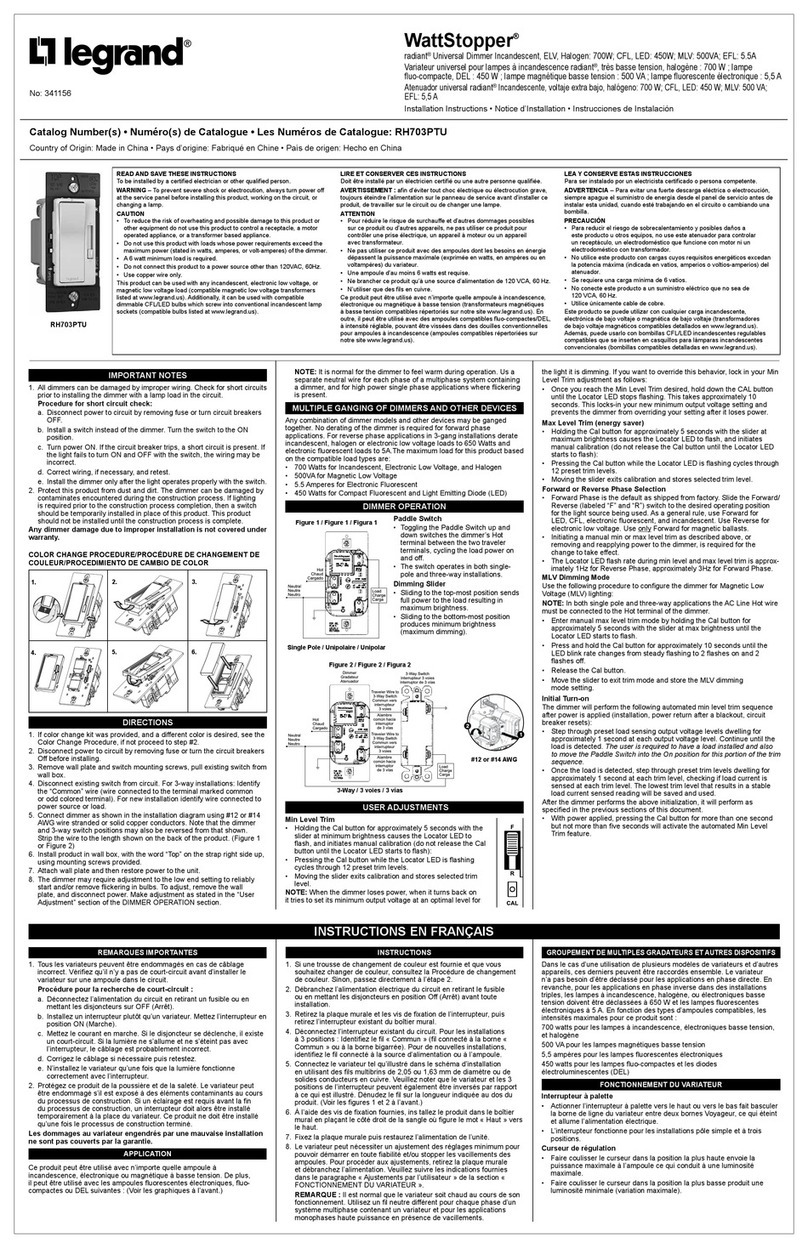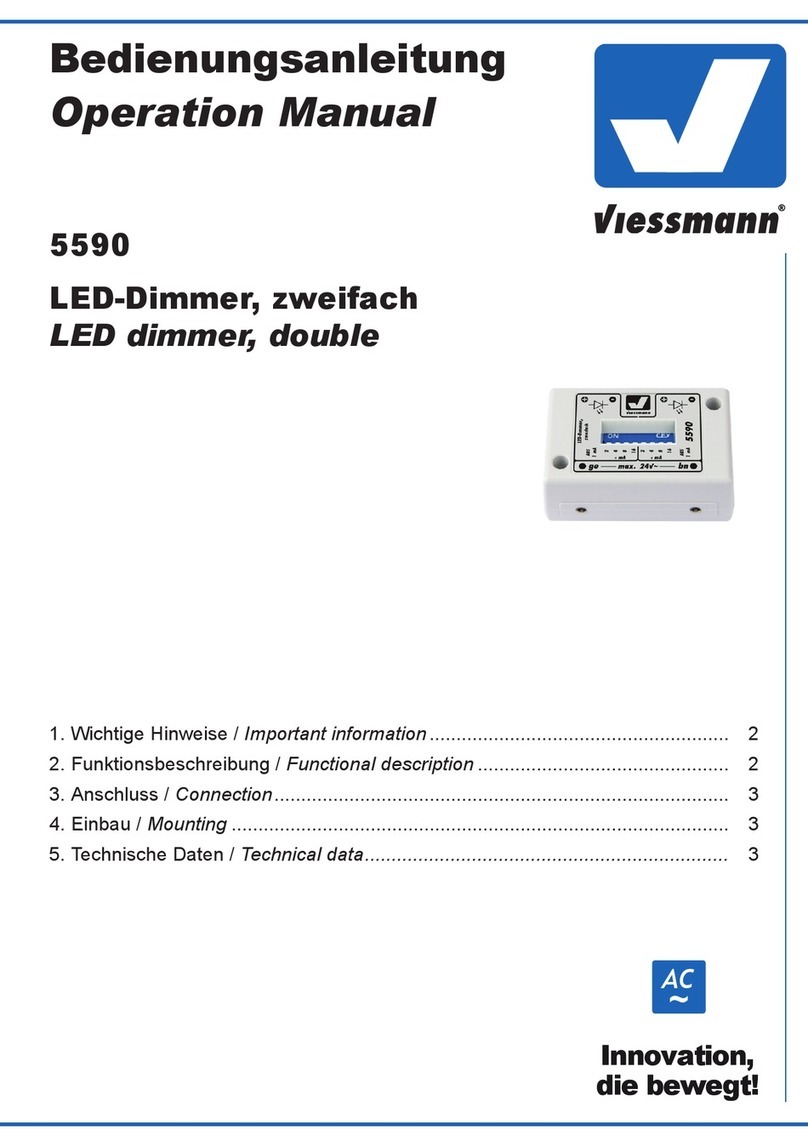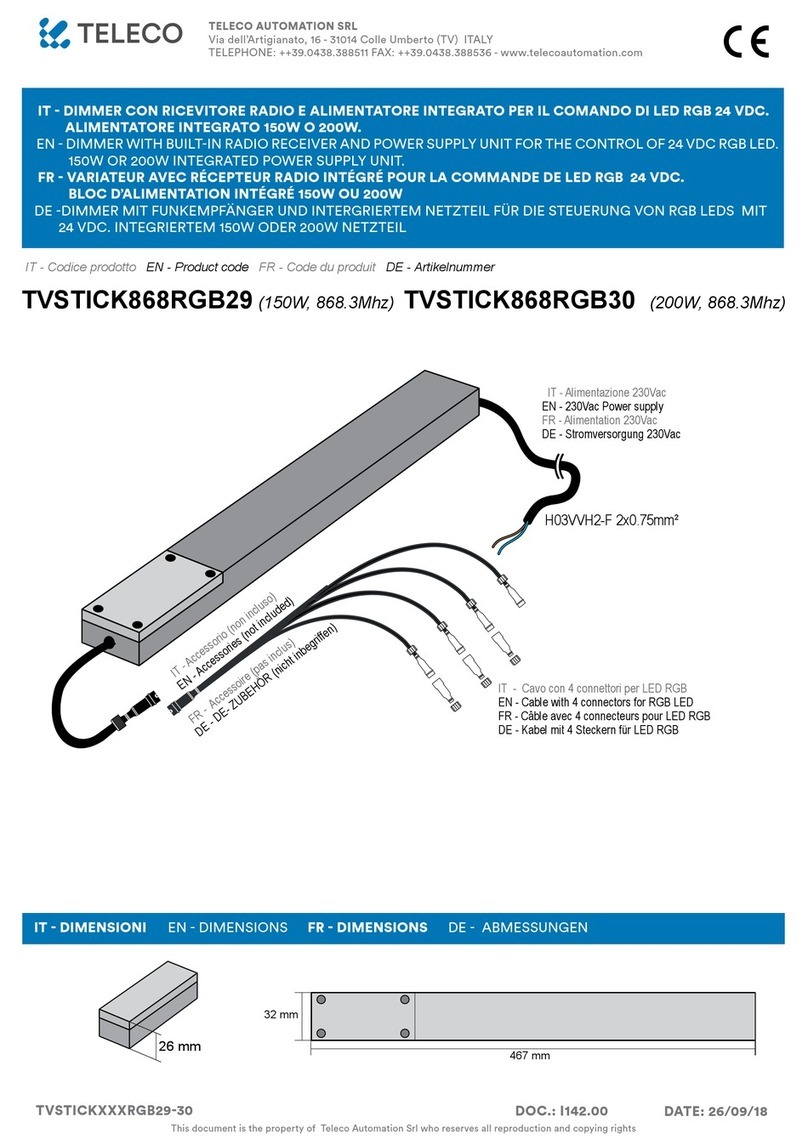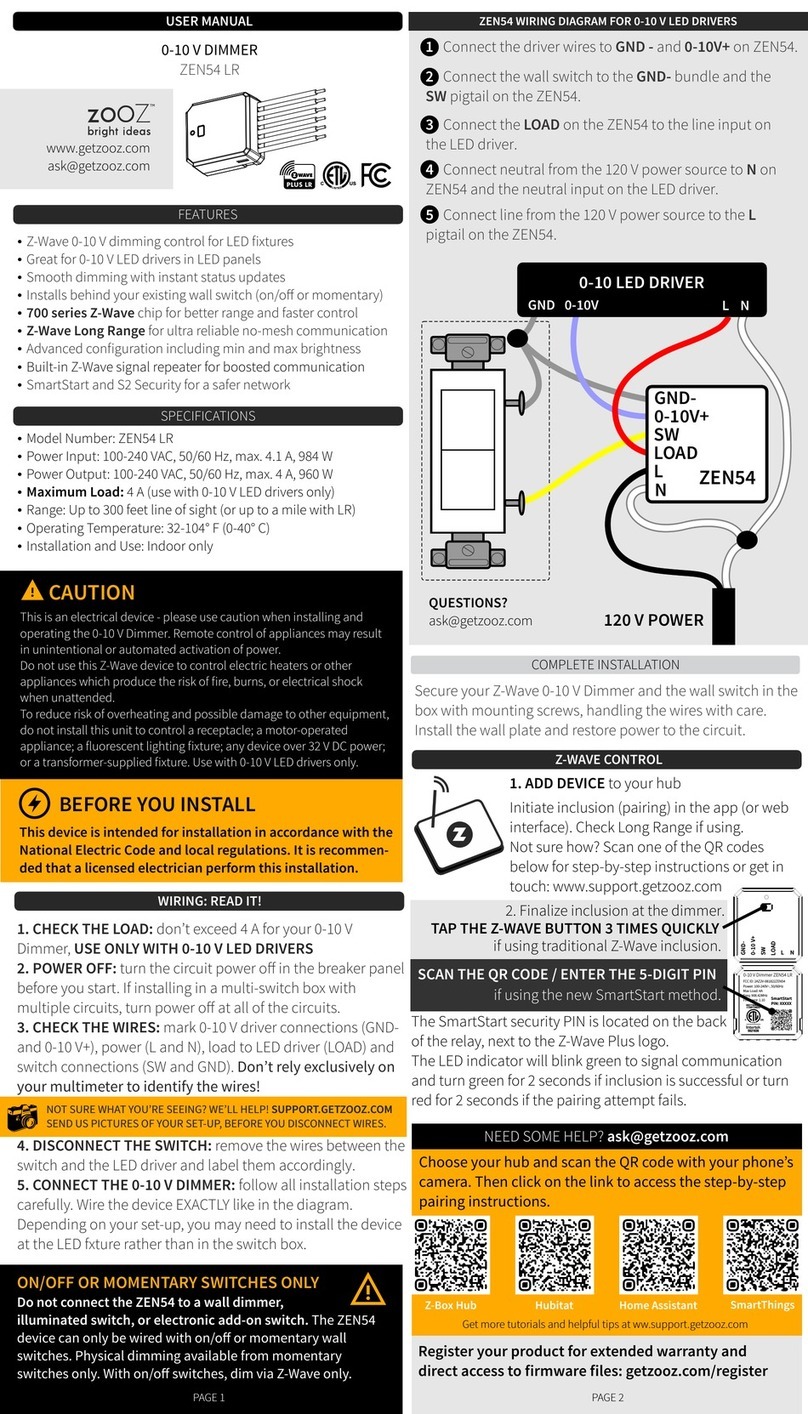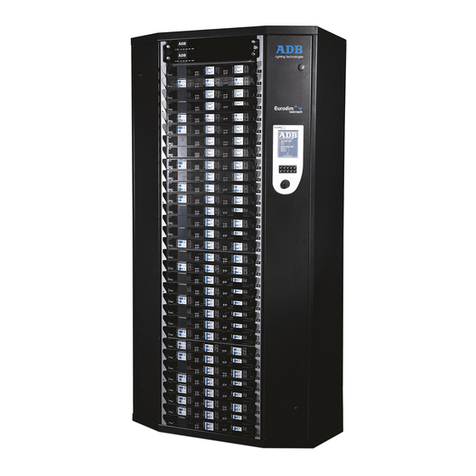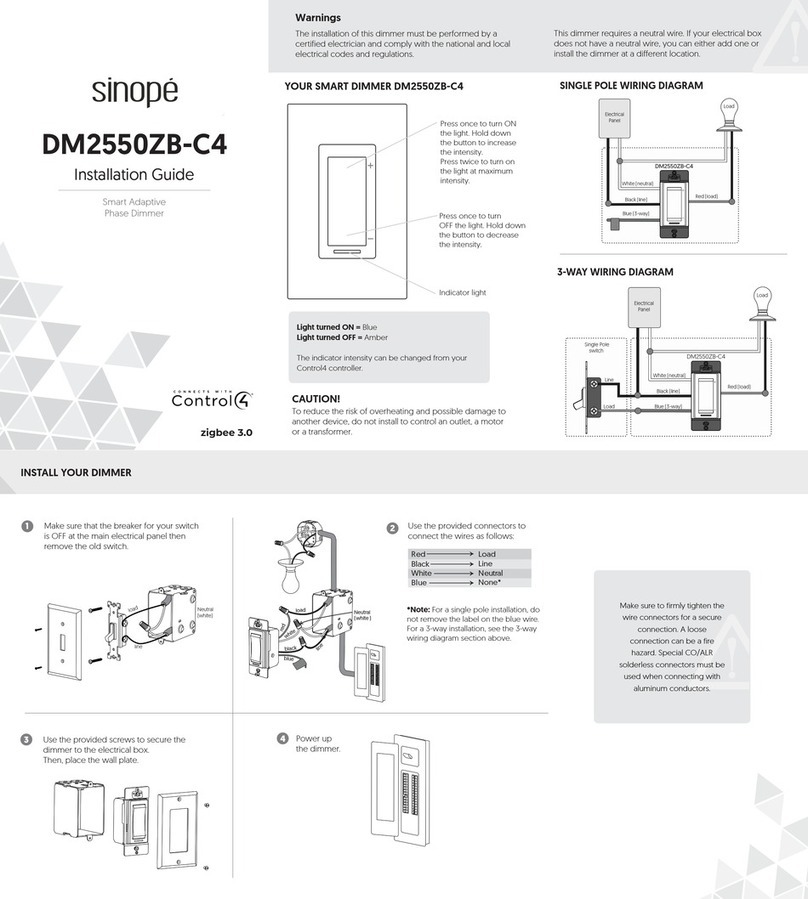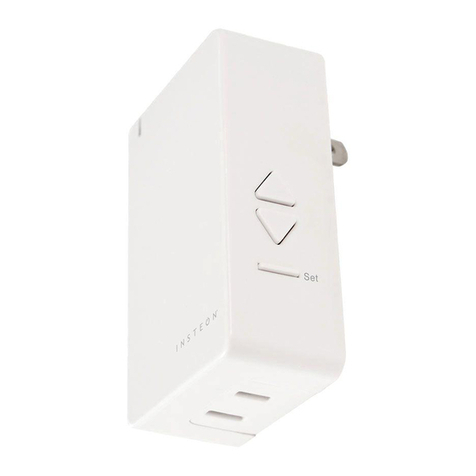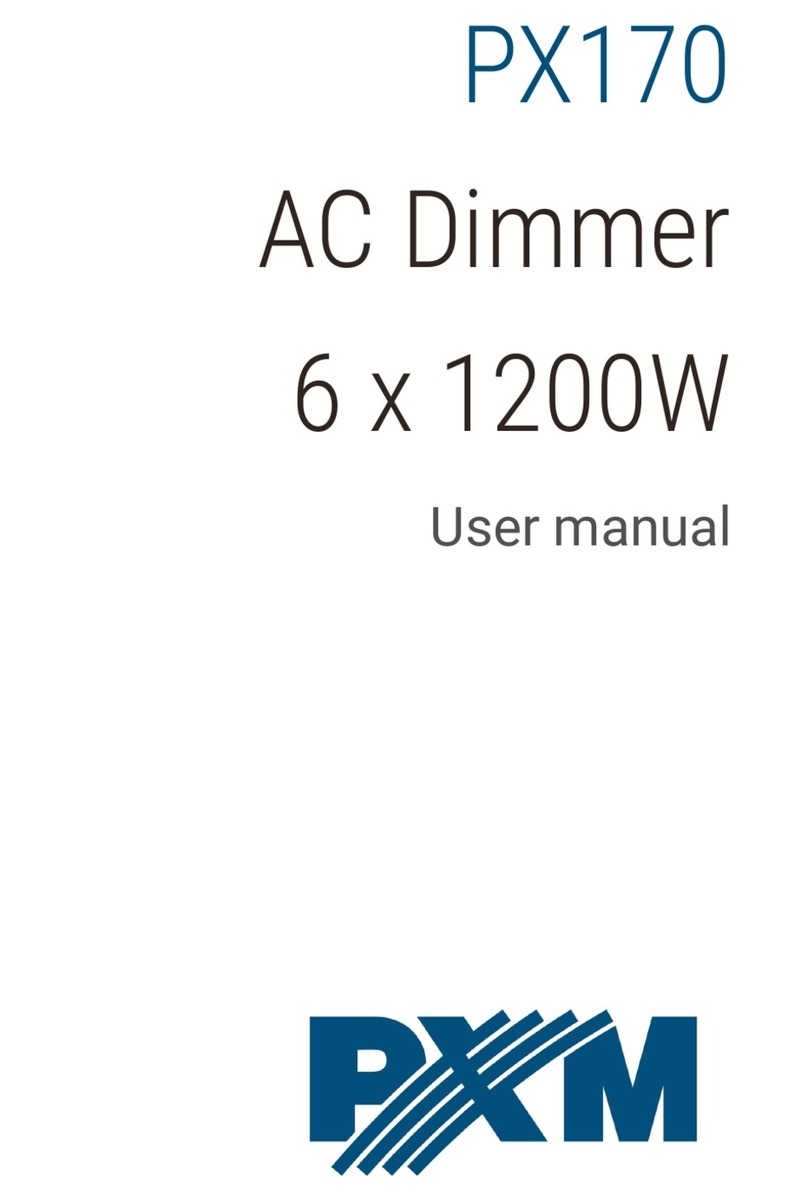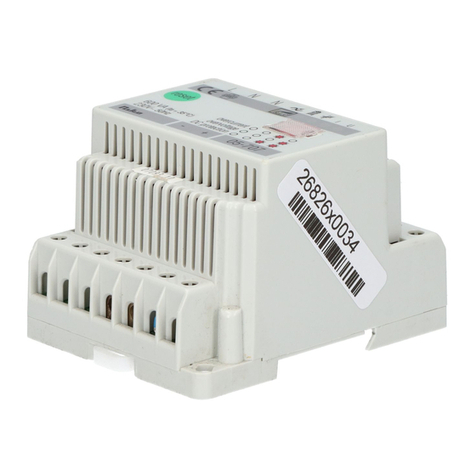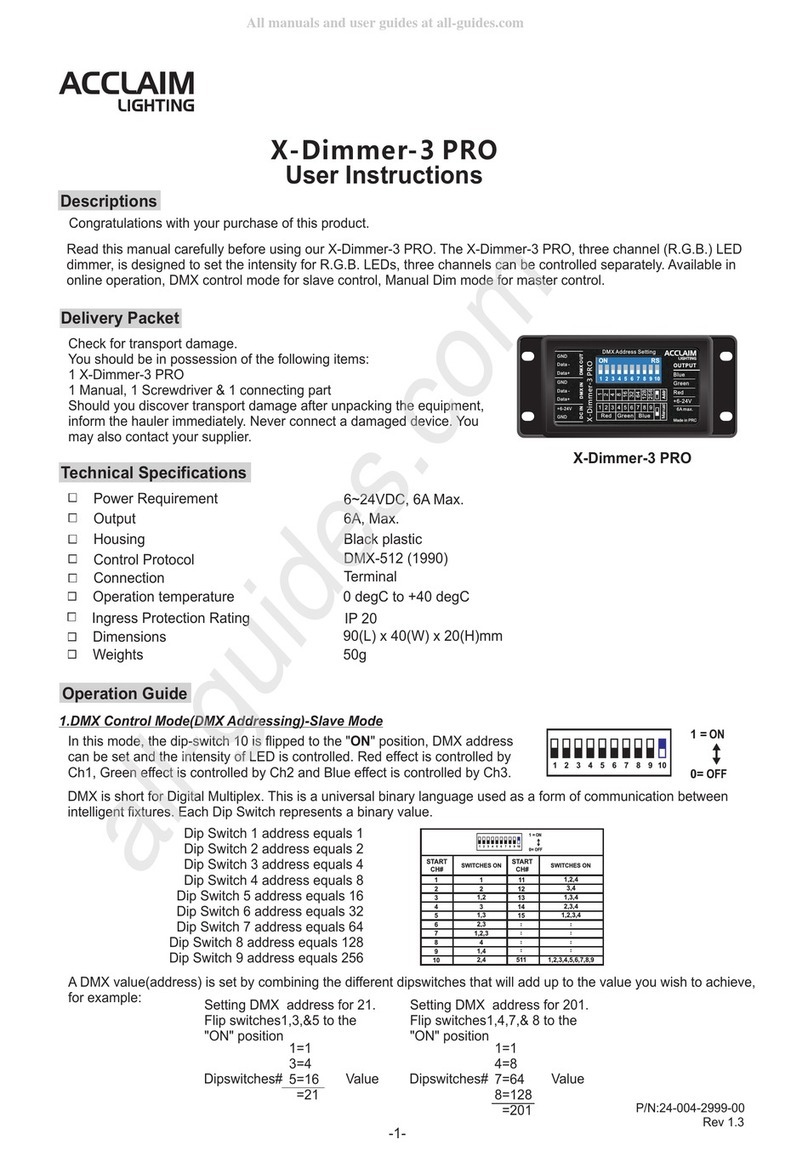
Installation and Operating Guide
Leviton MDS Dimmer Cabinets with Luma-Net Control Page 7 of 18
18
Digital Control Panel
The digital control panel in this cabinet is equipped with a powerful
microprocessor to make this a multifunctional system. It can accept several types
of input signals, depending on the exact configuration.
Luma-Net® III
The most common input is Luma-Net III, a Leviton protocol, that sends serial
digital data over a twisted pair of communication (data) wires. With this system,
controls can be located up to 2000 ft from the dimming cabinet. The two data
wires terminate on REM+ and REM- of the Luma-Net Terminal Block. Any shield if
present is not connected.
Along with this pair of communications (data) wires are a second pair of wires for
providing current limited 12 VDC power to operate displays and electronics in the
remote control stations. These wires terminate on COM and +V. The
communications signals require very little power, and number 24AWG wire is
adequate for the twisted pair. Belden number 9729 or equivalent is
recommended. However the 12 VDC power wires handle more current and should
be a minimum of 14 AWG size wire to insure that only a very small amount of
voltage drop takes place over long distances. If a remote DC power supply is
used, all DC common wires must be joined.
Where more than one remote control panel or dimmer cabinet using Luma-Net III
communications is used in a system, the data wires and the DC power wires are
run together from the dimmer cabinet to the nearest control station, then on to
the next station, and the next, and so on. At the last control station or dimmer
cabinet on both ends of the run, a small jumper wire must be run from the
terminal labeled “Rem-” to the terminal marked “Term” on that last station. This
jumper wire properly terminates the digital communications lines at the end of
the line.
DMX-512
The digital control panel accepts DMX-512 signals, an industry standard signal
widely used in the theater industry. This offers the opportunity to use small
theatrical consoles to control some or all of the dimmers in the MDS Dimmer
Cabinet.
Analog
The digital control panel accepts a third type of control signal often used with
analog control systems, if equipped with the optional DC Control Card. This signal
varies between 0VDC and +10VDC to control the dimmer outputs. An input of
0V results in no output power from the dimmer; an input of +10VDC gives full
voltage output from the dimmer. Varying this signal from 0VDC to +10VDC
varies the AC output voltage from zero to virtually full line voltage. If this system
uses analog inputs, an optional DC Control circuit card will have been added
during fabrication within the control cards assembly.
Multiple Signal Types
Under certain circumstances the digital control panel can receive two or more
types of input signals. The output from each dimmer is determined by the highest
input signal it receives from the different sources.


